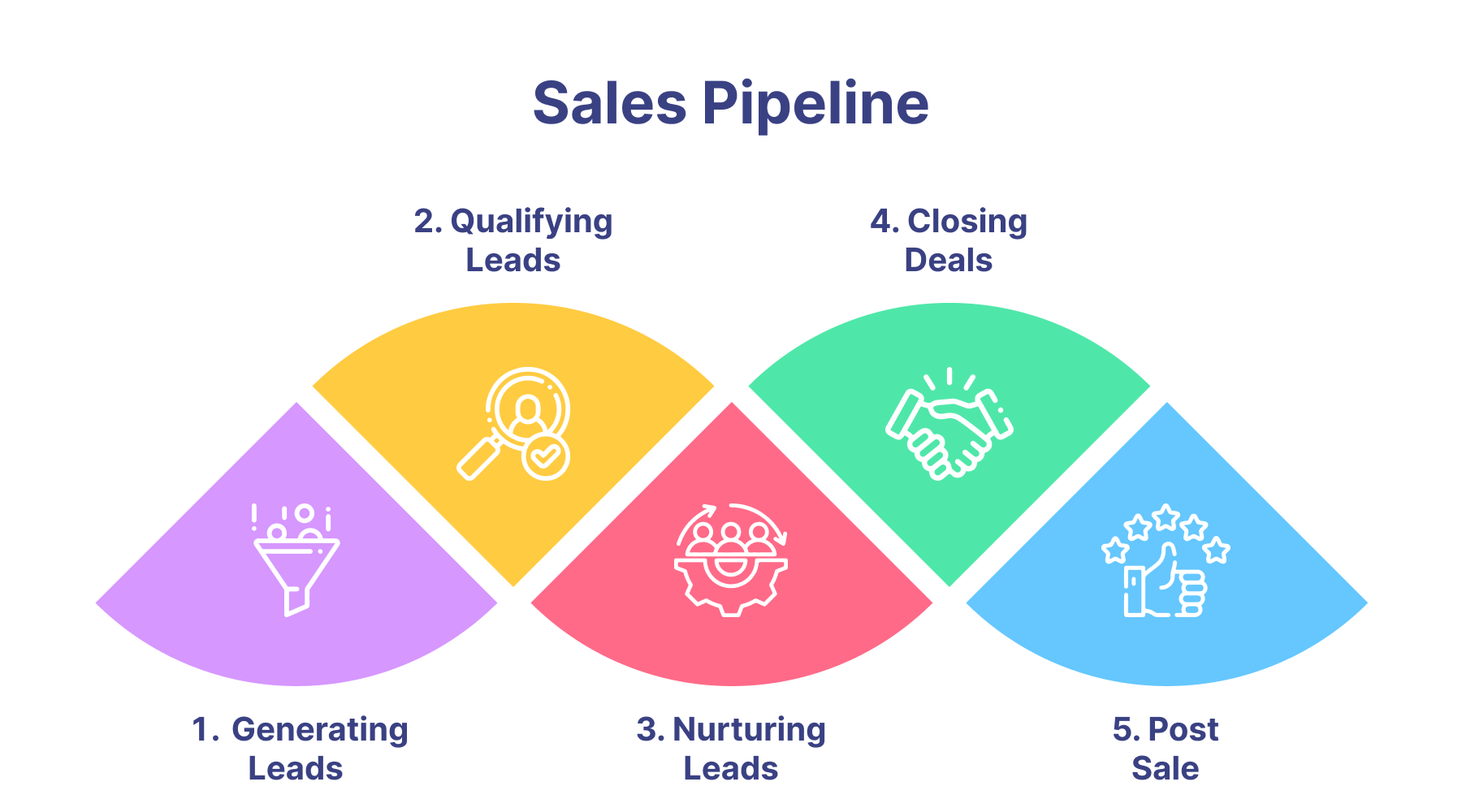Sales Pipeline Reporting: Defining the Concept and Creating a Sales Pipeline Report
06 Mar 2023
There's no question a well-executed sales pipeline is fundamental to any company's success. But what exactly is a sales pipeline, and how can you create one?
What is a sales pipeline?
A sales pipeline is a powerful tool that can help your business grow. It's a systematic process that helps you move your products from discovery to sale. The sales pipeline can help you identify your target market, create a sales plan, and forecast how much revenue you'll make in the future.
It is good to visualize gaps in the sales process that need. We need to identify potential bottlenecks. If prospects are in later sales funnel stages but not yet ready to buy, more effort is needed to move them forward.
Opportunities may need to be utilized in the earlier sales process. Identifying bottlenecks improves sales efficiency and revenue. The sales pipeline evaluates productivity and identifies areas for improvement.
What are the 4 stages of the sales pipeline?
To create a sales pipeline report, you will need to identify the steps involved in your typical sales process for your organization. Once you have recognized these steps, you can break down each part of the process into specific goals or metrics and create a visual illustration of each step in the sales process. Each step can then be listed separately on the report to track progress.
The following is a detailed example of creating a sales pipeline report:
Step 1: Outline steps.

Depending on the products or services you sell, the steps in your sales process may vary from organization to organization. But, sales pipeline reports should include the following steps:
- Generating leads: Potential customers are identified and entered into the database. At that point, warmly.ai generates leads by identifying site visitors and automating outreach to convert them into qualified leads in minutes.
- Qualifying leads: Prospects are evaluated to determine their buying readiness.
- Nurturing leads: Leads are developed over a duration to move them through the sales pipeline.
- Closing deals: The deal is closed once the customer has agreed to purchase. A sales report should include a list of steps for tracking progress during a sale.
- Post-sale: This stage is critical for extending the customer relationship after closing the deal.
Step 2: Identify the metrics.
When developing your sales process, it's essential to determine the metrics that will help you track progress. To do this, you'll need to identify the steps in the process and decide on the most relevant metrics for each stage. Keep in mind that different stages may require different metrics. This will allow you to track progress and make informed decisions to improve sales outcomes. Use a metric that compares closed deals to the target to track progress toward your monthly deals goal. Remember that different teams will have other metrics to measure sales reps' performance.
Step 3: Create a visual illustration for each stage of the process.
The sales team can use these illustrations to illustrate the different stages of the sales process visually. The stages should be easily recognized and understood in a report. If necessary, you can include multiple stages and details about each stage. So the team knows what information to collect at each step.
Step 4: Make an executive summary.
The report includes an overview of the key takeaways from the meeting. Also, it contains recommendations for addressing any sales procedure. Weaknesses identified during the process also included.
Using Spiky will give you details of the meeting metrics, which you can use to drive customer understanding and engagement. For example, suppose you plan to have several meetings with the same leadership team over several weeks. In this case, you can create a summary document that covers the main points from the first meeting. Then, you can provide updates based on the progress made in each after-session. You don't need to think about progress; let Spiky do the heavy lifting.
Step 5: Write the report body.
The body of the report is where you will provide details about each step. This includes the sales pipeline process and the metrics used to check each step. You should also check any recommendations made during the meeting. After that, you should discuss their impact on the sales team's performance.
In the report, you should describe each stage of the sales pipeline process. Also, outline the key metrics used to check each stage's effectiveness. Moreover, it would be best if you highlighted any suggestions during the meeting. Clarify how those recommendations will influence the sales team's performance.
After creating your sales pipeline;
This process will help your sales team track transactions and activity if implemented, managed, and iterated upon.
Remember to build the stages of your lead funnel on your sales team's actions to generate income. If your pipeline requires more or fewer phases, feel free to revise. Increasing the accuracy of your pipeline will enable you to reach your targets better.
If your pipeline works, you can identify what generates money and start generating more.
Sources:
https://www.pipedrive.com/en/blog/sales-pipeline-fundamental-stages
https://www.techtarget.com/searchcustomerexperience/definition/sales-pipeline
Join 2,000+ subscribers
Stay in the loop with everything you need to know.